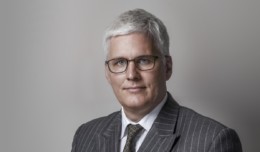Freedom of expression and the IOT: White v GMC [2021] EWHC 3286 (Admin)
Dr Samuel White has strong views on the management of the Covid pandemic, and on the appropriate treatment of those with Covid. Among the views he expressed on a video uploaded to social media were that the vaccine is a form of genetic manipulation that can cause serious illness and death, and that masks should not be worn. He also signposted viewers to other articles and comments on the internet in which similar views were expressed.
The GMC referred him to an IOT, which imposed conditions on his registration. These included that he should not use social media to put forward or share any views about the Covid pandemic and its associated aspects, and he should seek to remove any social media posts he had been responsible for, or had already shared, relating to those views.
At the IOT hearing the GMC stated that the issue was whether the Registrant’s comments fell within the bounds of legitimate free speech protected by Article 10 or whether they had passed beyond those bounds to conspiracy theory, which therefore undermined public confidence in the medical profession. When the Chair set out the approach the Tribunal was going to take at the conclusion of submissions, she did so in the manner familiar to all practitioners, setting out how the Tribunal would assess the risk to the public and reputation of the profession if the Registrant were to be allowed to practise unrestricted, guided at all times by the principle of proportionality.
In coming to its decision to impose conditions, the Tribunal stated that it had taken into account the Registrant’s arguments on freedom of expression but that it considered the manner he had expressed his views to the public may have had a real impact on patient safety. It went on to state that any doctor had a responsibility to provide sufficient and balanced information to allow potential patients and members of the public to make their own accurate assessment of risk. By imparting the information he did, in the manner he did and in his capacity as a registered doctor, Dr White did not give “the opportunity for a holistic consideration of Covid- 19, its implications and possible treatments and potential for reducing risk to health in individual circumstances.” Given the strength of his views, there was a real prospect of repetition.
On review in the High Court Dove J revoked the order. In doing so, Dove J made it clear that he was not expressing a view one way or the other as to the merits of Dr White’s views. However, he noted that the order of conditions was an interim order pending a final resolution of the issue. At the hearing, neither party had referred the Tribunal to section 12 of the Human Rights Act 1998, which provides that where a court or tribunal is considering whether to grant any relief which, if granted, might affect the exercise of the Convention right to freedom of expression (section 12(1)), no such relief is to be granted so as to restrain publication before trial unless the court is satisfied that the applicant is likely to establish that publication should not be allowed: section 12(3).
Dove J cited the judgment of Lord Mance in PJS v News Group Newspapers Limited [2016] UKSC 26 in which the latter stressed that the likelihood of success at trial is an essential element in the court’s consideration of whether to make an interim order. The courts should be exceedingly slow to make such an order unless the applicant satisfies the court that it is more likely than not that it will succeed: PJS para 19.
It was clear that the IOT did not have section 12(3) in mind when it made its decision. Not only had the parties failed to draw it to the Tribunal’s attention, but also the Guidance used by the IOT failed to deal with issue. Dove J noted that the Guidance refers to the balancing of the public interest and the doctor’s own interests and makes it clear that IOTs do not make findings of fact or resolve factual disputes. However, the failure to allude to section 12 or to apply the test set out therein was an error of law and a clear misdirection such that the decision could not stand.
At paragraph 28, Dove J alluded to the possibility that the GMC might make a further application for an order of conditions. He noted that as currently drafted the conditions would prevent Dr White from revealing that he had changed his mind. Further, in order to be proportionate, any condition proposing to curtail freedom of expression on an interim basis would likely need to be specific as to what views or opinions the person subject to the order is precluded from expressing.
There is a clear tension between the powers and practice of the IOT as traditionally understood and the obligation for it to be satisfied that the GMC is more likely than not to succeed at the final hearing. In cases not involving freedom of expression, the IOT is entitled to assess the weight of the evidence as it understands it to be, without determining the prospects of success, as part of its general approach to the question of risk, which is very different to the test set out in section 12(3). In future, would the determination of such an issue involve a mini trial, at least on paper, with evidence as to the effect on public safety and/or confidence? This would plainly lead to hearings of greater length than practitioners are used to at the IOT. The question also arises, had the Tribunal suspended Dr White, whether such an order would have involved an interference with his article 10 rights.
Categories: Newsletters


